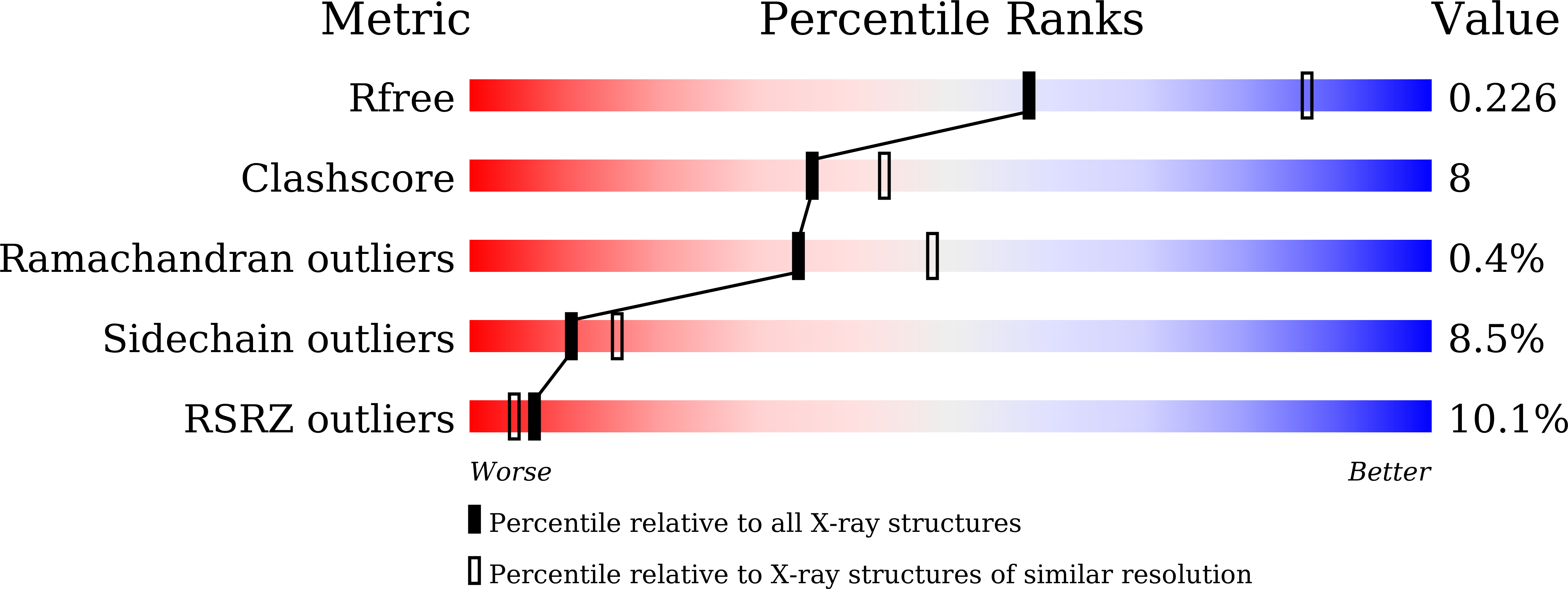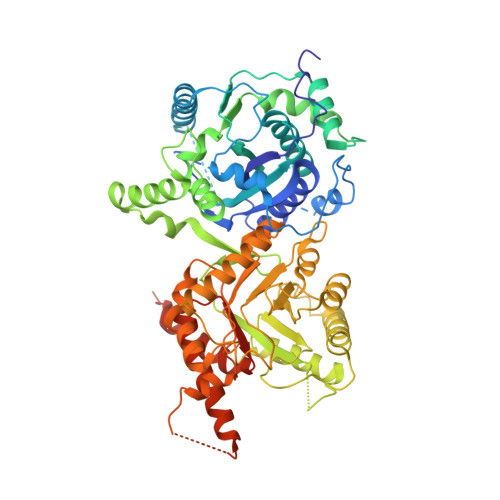The structure of Plasmodium falciparum hydroxymethyldihydropterin pyrophosphokinase-dihydropteroate synthase reveals the basis of sulfa resistance.
Chitnumsub, P., Jaruwat, A., Talawanich, Y., Noytanom, K., Liwnaree, B., Poen, S., Yuthavong, Y.(2020) FEBS J 287: 3273-3297
- PubMed: 31883412
- DOI: https://doi.org/10.1111/febs.15196
- Primary Citation of Related Structures:
6JWQ, 6JWR, 6JWS, 6JWT, 6JWU, 6JWV, 6JWW, 6JWX, 6JWY, 6JWZ, 6KCK, 6KCL, 6KCM - PubMed Abstract:
The clinical efficacy of sulfa drugs as antimalarials has declined owing to the evolution of resistance in Plasmodium?falciparum (Pf) malaria parasites. In order to understand the basis of this resistance and to design more effective antimalarials, we have solved 13 structures of the bifunctional enzyme 6-hydroxymethyl-7,8-dihydropterin pyrophosphokinase (HPPK)-dihydropteroate synthase (DHPS) from wild-type (WT) P.?falciparum and sulfa-resistant mutants, both as apoenzyme and as complexes with pteroate (PTA) and sulfa derivatives. The structures of these complexes show that PTA, which effectively inhibits both the WT and mutants, stays in active sites without steric constraint. In contrast, parts of the sulfa compounds situated outside of the substrate envelope are in the vicinity of the resistance mutations. Steric conflict between compound and mutant residue along with increased flexibility of loop D2 in the mutants can account for the reduced compound binding affinity to the mutants. Kinetic data show that the mutants have enhanced enzyme activity compared with the WT. These PfDHPS structural insights are critical for the design of novel, substrate envelope-compliant DHPS inhibitors that are less vulnerable to resistance mutations. DATABASES: The data reported in this paper have been deposited in the Protein Data Bank, www.wwpdb.org. PDB ID codes: 6JWQ for apoWT; 6JWR, 6JWS, and 6JWT for PTA complexes of WT, A437G (3D7), and V1/S; 6JWU, 6JWV, and 6JWW for STZ-DHP complexes of WT, 3D7, and V1/S; 6JWX, 6JWY, and 6JWZ for SDX-DHP complexes of WT, 3D7, and W2; 6KCK, 6KCL, and 6KCM for Pterin/pHBA complexes of WT, TN1, and W2.
Organizational Affiliation:
National Center for Genetic Engineering and Biotechnology (BIOTEC), National Science and Technology Development Agency, Pathumthani, Thailand.























